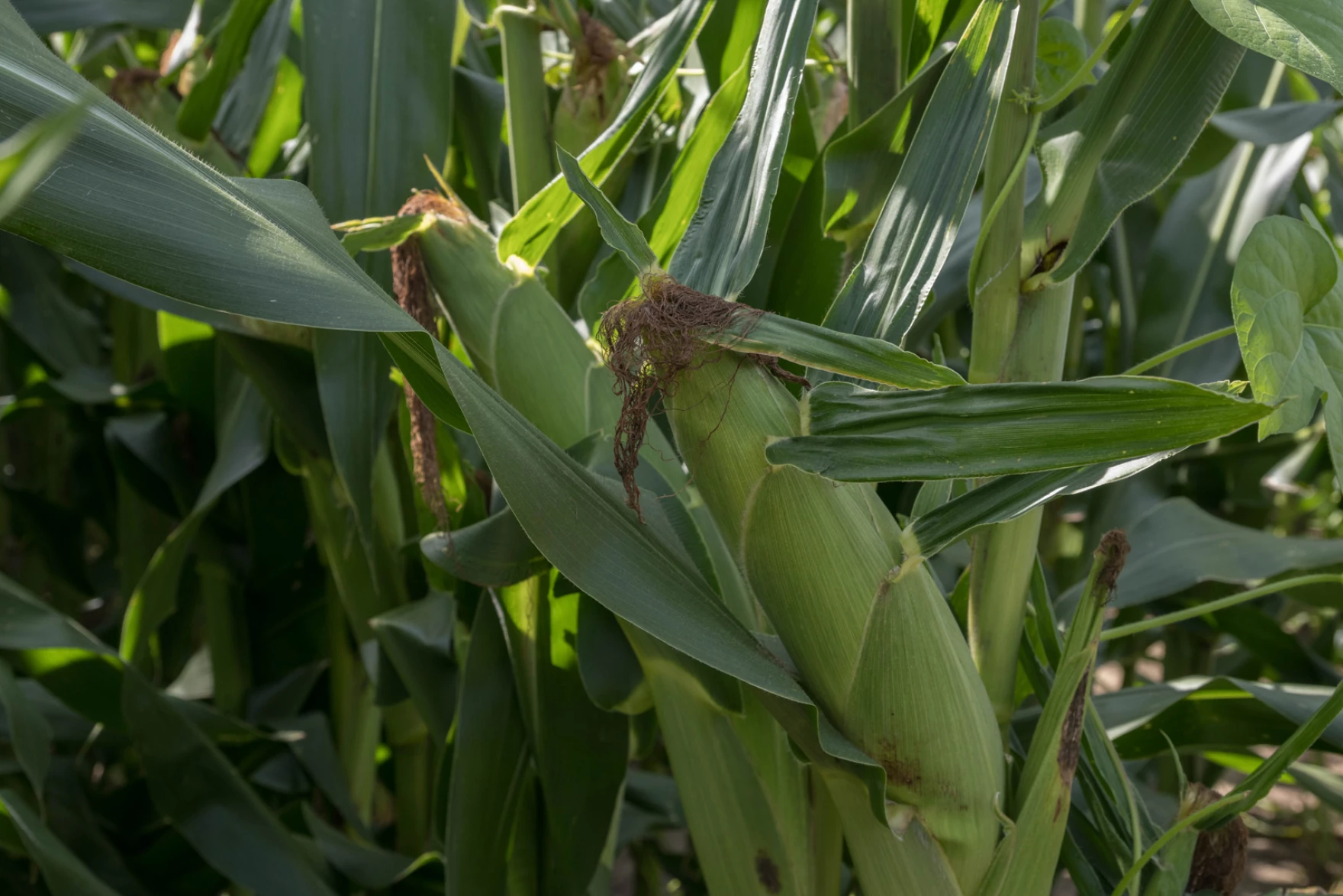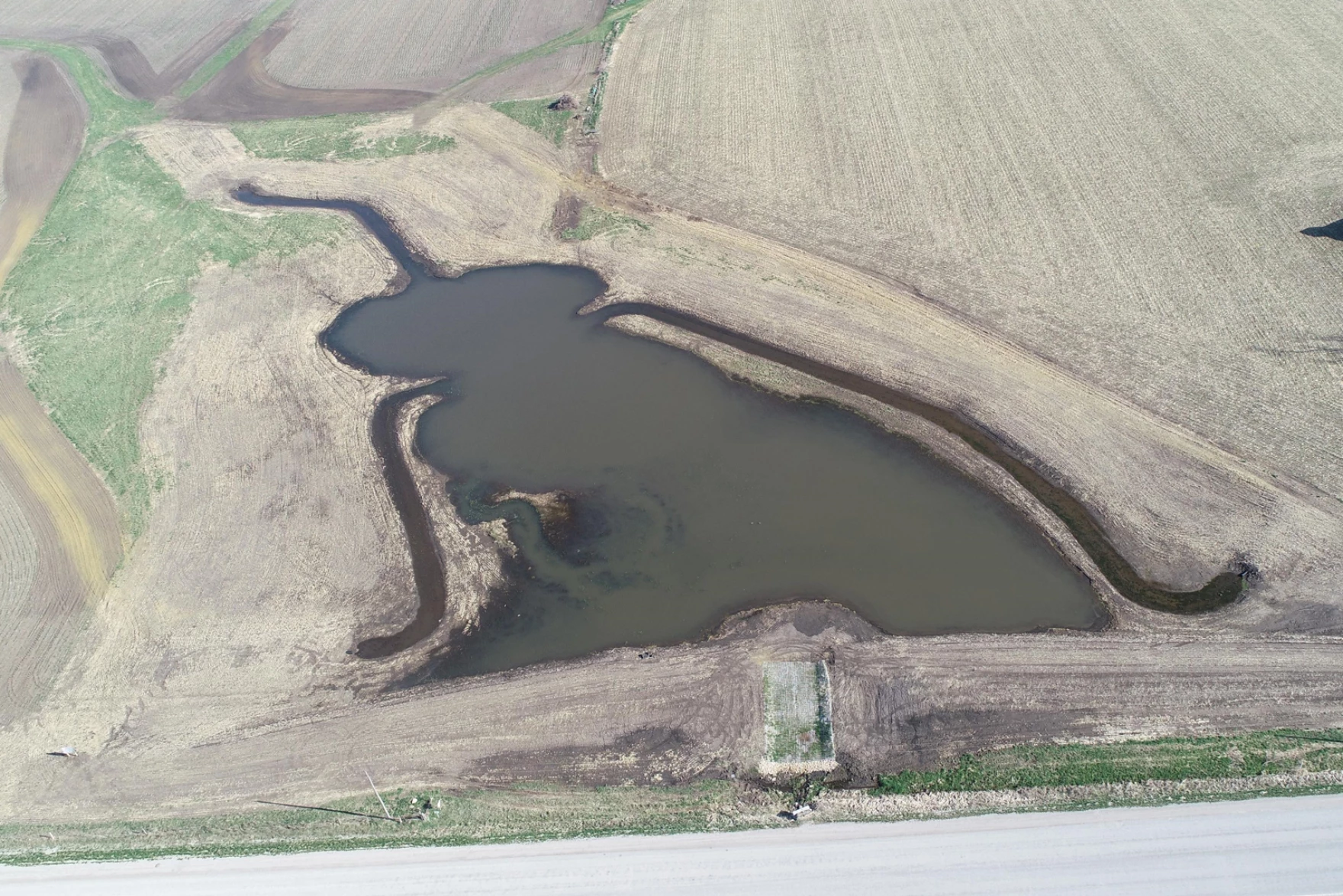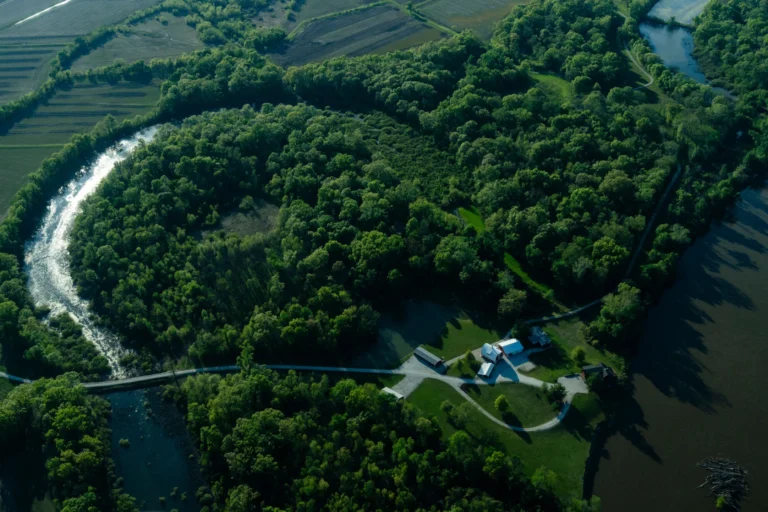Decades of data show nitrate levels in rivers often drop during dry years and spike when rain returns. Experts say more conservation practices in and around farm fields could help smooth out the sharp peaks to protect drinking water and downstream impacts.
Widespread rainfall in the spring and early summer briefly relieved a years-long drought in the Corn Belt. But it also contributed to elevated nitrate concentrations in many of the region’s waterways.
“The more water that we have in a given year, the more we get, kind of a flushing effect of that nitrate, which ultimately makes its way … into a waterbody and then downstream from there,” said Justin Schroeder, the utilities environmental manager in for the city of Cedar Rapids, Iowa’s second largest city.
Soil microbes produce nitrate, which plants need to grow. Many farmers also add it to their fields with synthetic fertilizer and manure. During dry years, the nutrient can accumulate in fields. Then, when there’s a big rain, it dissolves and moves with water.
In the Corn Belt – an area that curves from eastern South Dakota to Ohio – millions of acres are drained by field tiles. Nitrate that isn’t absorbed by plant roots often flows into this underground network of pipes and empties into ditches and streams connected to a larger watershed.
With a wet May and June in Iowa, the nitrate concentration equaled or exceeded the federal drinking water standard for 68 days in the Des Moines River and 76 days in the Cedar River, according to the U.S. Geological Survey.
“In the last three years, [nitrate] concentrations and loads were substantially less,” said Steve Kalkhoff, a hydrologist with the U.S. Geological Survey. “But then again, in 2024, when we’ve had higher flow, more normal rainfall, the concentrations have increased again.”
Kalkoff pointed out a similar pattern in 2013. The summer after the historic 2012 drought, nitrate concentrations shot up, setting records in many rivers and streams in the Midwest. Another, drop-spike cycle played out in 1990 in some watersheds after two very dry years in the late ‘80s.
He added that flooding sometimes complicates the pattern. Big volumes of water can release more nitrate from farm fields, but it can also dilute the dose. The time of year also matters.

Cancer, fish kills and utility bills
The U.S. Environmental Protection Agency’s threshold for nitrate in public drinking water systems has been 10 milligrams per liter for decades. It was set to prevent blue baby syndrome, a life-threatening condition that causes low oxygen levels in an infant’s blood.
But there’s a growing number of studies that have linked nitrate concentrations lower than 10 milligrams to colorectal cancer, thyroid disease and other health issues.
“The way we regulate nitrate now, is probably not adequately protective for public health,” said Keeve Nachman, a professor and associate director of the Johns Hopkins Center for a Livable Future, during a conference hosted by the Harkin Institute for Public Policy and Citizen Engagement.
The EPA Integrated Risk Information System is currently reviewing this body of research, which Nachman said could result in a lower threshold for the nitrate concentration allowed in public drinking water. The federal government does not regulate private wells.
High levels of nitrates and other nutrients also contribute to algal blooms that can suck up oxygen in rivers and lakes and add to the Gulf of Mexico’s “dead zone.” Some blooms release toxins that can harm people, pets and wildlife. Others create smelly piles on beaches.
Nutrient pollution is also an economic issue, said Kim Lutz, the director of St. Louis-based America’s Watershed Initiative.
Fish kills and spoiled beach vacations affect the seafood and tourism industries. There’s also a big financial burden for municipal utilities to upgrade water treatment plants or dig new wells.
Des Moines Water Works, which serves Iowa’s largest metro, can activate a nitrate removal facility when concentrations in the two rivers it draws from are high. It costs around $10,000 per day.
Lutz said many states in the Mississippi River Basin are working on nutrient reduction strategies. America’s Watershed Initiative works across 31 states. But it’s challenging to move the needle, she said.
“As we’re getting more extreme weather events, especially in the Midwest, that’s liberating a lot of the things in the soil that are legacy pollutants,” Lutz said. “So that combination of these flood and drought cycles, the more intense rain, the time of year that’s happening, are all leading to exacerbating the problem.”
The rise of nitrates
Plants and animals need nitrate to survive, and low concentrations are common even in pristine streams. But research suggests a rapid increase between 1960 and 1980.
While some of this stems from more urban growth and wastewater, a lot of it is connected to the transition from mostly small, diversified farming operations to more intense corn production. This change was bolstered by newly available synthetic fertilizers.
It also coincides with the rise of confined animal feeding operations, or CAFOs. Billions of pounds of nutrient-rich manure produced from these operations each year are often spread on fields, either as a complement or alternative to synthetic fertilizer.
Whether it’s manure or synthetic fertilizer, farmers in the Corn Belt and around the world often apply more than what crops can take up.

But nitrate loss can still be a challenge on farms without these inputs, said Mike Castellano, an agronomy professor at Iowa State University.
“We know that even if we don’t apply fertilizer to fields, there is still significant nitrate losses from those fields,” Castellano said. “There’s roughly 10,000 pounds of nitrogen per acre on average in soil organic matter in the state of Iowa.”
When the soil is warm enough, microbes transform 1 to 4% of that nitrogen into nitrate, Castellano said. But in a conventional corn field, there aren’t any roots in the early spring or after harvest in the fall to absorb it.
“We need to take advantage of resources in soil as best as we can, and we’ll need a number of solutions that take a systems approach,” Castellano said.
Planting cover crops
Researchers say more tools to help farmers precisely figure out how much fertilizer to apply and conservation practices, like planting cover crops, could help.
Long-term data from Iowa State University research sites show lower nitrate loads and concentrations in field drainage when there’s a winter cereal rye cover crop. Matt Helmers, an agriculture and biosystems engineer and director of the Iowa Nutrient Research Center, compared trends from two locations – one with this cover crop and one without – during a recent Iowa Learning Farms webinar.
He said both sites had a corn and soybean rotation and used the same fertilizer management plans. But the nitrate concentration from the site with cover crops was about half of what it was in the conventional field in 2013 and earlier this year.
“As we think about this weather variability and the potential for dry conditions, followed by potentially wet springs, I think cover crops can be very effective in field practice for us to mitigate or reduce that risk of increased nitrate concentrations,” Helmers said.
Lutz said a growing number of farmers implementing cover crops and other conservation practices is encouraging, as is more awareness across sectors about water quality issues.
She said there’s also more funding now for rural and tribal infrastructure projects to provide clean, reliable drinking water through the Bipartisan Infrastructure Law.
A ‘both/and’ approach
Lutz said addressing water quantity and quality challenges will take a combination of what she called “green-gray” infrastructure. That is, harnessing conventional “gray” infrastructure, like water treatment plants and floodgates, with more nature-based “green” infrastructure, like restored wetlands and protected coastal buffers.
“There are many ways to use nature as part of the solution,” Lutz said. “We’ll still need gray infrastructure to help get us all the way there, but the combination of the two is a really exciting, new area of exploration. It can’t be an either/or. It has to be a both/and.”

Projects in Cedar Rapids, Iowa, are an example of this.
The city and its partners recently worked with an upstream farmer to build a water treatment wetland. Several of the landowner’s field drainage tiles now empty into the wetland, rather than a creek close to the city’s main source of drinking water.
“[The wetland] does a really phenomenal job of removing the nitrate,” said Mary Beth Stevenson, the watersheds and source water program manager with the City of Cedar Rapids. “The natural ecologic process helps to filter the water, provides habitat for wildlife, and it’s just really kind of a beautiful, peaceful place, and has just really great benefits for us downstream.”
She said a nearby oxbow wetland also helps.
Much of the funding for this and other projects comes from the U.S. Department of Agriculture Regional Conservation Partnership Program, Stevenson said.
Cedar Rapids is also upgrading its wastewater treatment facility to reduce nutrient pollution downstream, Schroeder, the utilities environmental manager, said.
“We consider water one entity, whether it’s source water, groundwater, wastewater, drinking water,” Schroeder said. “It’s all part of one water ecosystem that doesn’t care about jurisdictions’ boundaries. It only cares to flow downhill.”

